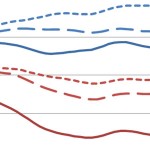Cranston Residents View Halfway Houses as Potential Criminal Threat in Suburban Settings
How many halfway houses are packed within close proximity to playgrounds, schools, and suburban neighborhoods in Cranston?
That is part of the problem, according to “Crime Watch” activists who are closely monitoring the situation within the Auburn section of their community. No one really knows, not even the police.
“I was astonished to learn that Auburn was being overrun with what I understand are private businesses with no strict licensing requirements, Diana Gordon, the coordinator for the Central Cranston Crime Watch, said. “But the taxpayers and residents apparently have no say here, that’s very unsettling because there are some real safety issues that need to be raised.”
The Cranston Municipal Code Book defines a halfway house as “a residential facility for adults or children who have been institutionalized for criminal conduct and who require a group setting to facilitate the transition to a functional member of society.”
While she is supportive of having programs in place that help individuals leaving the prison system transition back as productive members of their community, Gordon is concerned that there is not sufficient oversight from government officials.
The Rhode Island Department of Mental Health Retardation and Hospitals is the agency that should be responsible for overseeing halfway houses, she noted.
“I don’t see where there are any strict licensing rules or variance requirements for these homes,” said Gordon, who is also a candidate for Cranston City Council for Ward 2. “Before a half-house is set up, I think local residents should be informed.”
The revisions to the “Good Time” bill that Rep. Teresa Tanzi (D, District 34) has recently advanced could open the way to reforms that enhance neighborhood safety,” Gordon said.
“Are there dangerous criminals in the halfway houses that walk the neighborhoods unsupervised?” she asked. “That’s the big question. “Another one I have is who owns and operates the half-way houses? There are just too many unknowns.”
A key culprit here is the “OpenDoors” program, Carolyn Medeiros, executive director of the Alliance for Safe Communities, a non-profit group, has argued. OpenDoors, which is located in the Silver Lake area of Providence, is a resource and support group for former criminal offenders.
The OpenDoors “re-entry” program is set up to do the following:
- “Successfully reintegrate formerly incarcerated individuals by preparing them pre-release and supporting them during the post release period and beyond”
- “Reduce recidivism by streamlining opportunities for ex-offenders to become integral members of the community and society, nurturing personal responsibility, and advocating for the removal of social and legal barriers to re-entry”
- “Stabilize families of ex-offenders by providing services that build on individual and family strengths and needs”
- “Reinvest in communities and reduce incarceration rates by promoting investment in education, community development, and a smart-on-crime criminal justice approach”
Although the goals seem laudable, OpenDoors is in reality placing vulnerable populations in great jeopardy, Medeiros has argued.
“Right from its inception, the program has lacked transparency and forthrightness,” she said. “This has been the pattern in Rhode Island, and it is part of a larger national problem. “There is a machine at work here, and there is a lot of money flowing into these homes.”
Community activists should do everything they can prevent halfway houses from opening in the first place, Medeiros suggested. Otherwise, they are very difficult to uproot once they get started.
The safety issues associated with half-way houses are not limited to Rhode Island, she points out.
“This part of a larger national problem, Medeiros said. “Half-way houses are popping up in suburbs all across the country, they are preying on low-income neighborhoods. There’s a real machine at work here involving money and politicans.



